1/26/1945 - Already a hero many times over, 19-year-old Second Lieutenant Audie Leon Murphy, has a day of fighting that will make him the most decorated American combat soldier of World War II (and serve as a springboard for a 21 year acting career in Hollywood), winning the Congressional Medal of Honor (before he returns to the United States, Murphy will receive every combat award for valor available to an American soldier ... in all, he will win 33 awards and decorations) for his actions near the town of Holtzwihr, France (on the country's northeastern border with Germany).
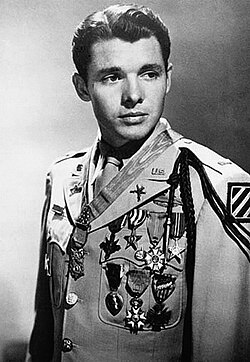
Murphy And His Medals - 1948
Born in Kingston, Texas in 1925, Murphy is the seventh of twelve children born to Irish descended sharecroppers, Emmett Berry Murphy, and his wife, Josie Bell Killian ... dirt poor would be the dictionary description of the family. Dirt poor and then deserted by Emmett (the family will never see or hear from him again), so Murphy drops out of school in the 5th grade to hunt food for the family (bullets cost money and the knowing youngster quickly develops into a crack shot), and to work in their support picking cotton for a dollar-a-day. When his mother passes away from endocarditis (an inflammation of the heart) and pneumonia when Murphy is sixteen, the future warrior works for a general store in the Texas town of Greenville (his three youngest siblings are placed in a Christian orphanage ... after the war, they will be reunited with their family when Murphy buys his oldest sister a home in Farmersville) doing odd jobs and repairing radios ... until the Japanese attack on Pearl Harbor in 1941 turns his life completely upside-down.
Young Audie
Always wanting to be a soldier, and seeing the service as a means of earning money for his family, Murphy tries to enlist in the Marines, Navy, and Army, but is told he is too young, and too small (he is 5'5" and 110 pounds). He persists in trying to enlist though, and after he beefs up by 15 pounds and has his sister provide a false affidavit that he is a year older than he actually is, Murphy is accepted into the United States Army on June 30, 1942 ... in time to participate in the Army's European campaigns.

Murphy
Basic Training
A natural at combat and leadership, starting as a private with the 3rd Infantry Division as it trains in North Africa, it does not take Murphy long to be noticed ... he is a platoon messenger and participates in the Allied invasion of the island of Sicily, kills two Italian officers during a scouting patrol on Sicily (knocking them off the horses they try to ride away on with his accurate rifle fire), participates in the Allied invasion of Salerno, Italy, with another soldier, using hand grenades and a machine gun, kills five Germans taking out a machine gun nest, becomes a sergeant after stopping a German attack on Migano Monte Lungo Hill, after being hospitalized with malaria, returns to his unit in time to participate in the fighting that takes place at the Battle of Cisterna near the Allies' Anzio, Italy beachhead, receives a Bronze Star for destroying a German tank and its crew with rifle grenades, takes several Germans prisoner during scouting patrols, and participates in the liberation of Rome on June 4, 1944. And then it is on to France as a Staff Sergeant!
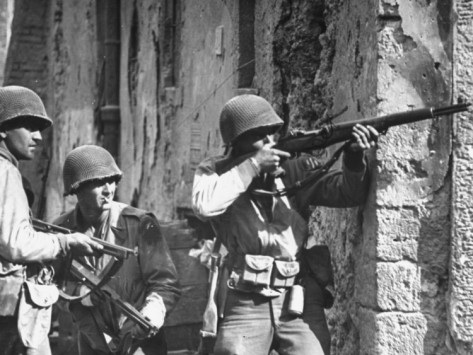
House Fighting During The Battle Of Cisterna
A member of the Allied invasion forces that establish a new front against the Germans in southern France as part of Operation Dragoon, Murphy earns a Distinguished Service Cross on his first day in France, taking out a defensive position in a vineyard farmhouse after Murphy's best friend, 33-year-old Private Lattie Tipton from Tennessee, is killed by soldiers pretending to surrender (berserk with anger, Murphy adds eight more notches to his resume, wounds two other Germans, and takes eleven prisoners before calling it a day). A month later, he gets his first Purple Heart by way of a mortar round that puts hot steel in Murphy's heel (the blast kills two other soldiers, knocks Murphy unconscious, and shatters the stock of his lucky carbine (which Murphy will wire back together). Treated and back on the line a couple of weeks later, the ace soldier gets his first Silver Star killing four and wounding three more Germans taking out a machine gun position in the Cleurie river valley. Three days later he earns a Bronze Oak Leaf Cluster for his Silver Star by spending a solo hour in a fire exposed forward position calling down mortar and artillery fire on a L'Omet hill his unit has been ordered to take (the hill will be taken after 15 Germans are killed and another 35 wounded by Murphy's directed firing). In October of 1944, Murphy has an encounter with a German sniper team that leads to two more prisoners, a dead German sniper (shot between the eyes by Murphy), and a nasty hip wound (a large chunk of flesh will have to be removed from Murphy's hip when the wound becomes infected). Three months later, Murphy returns to the front lines ... just in time to face a German attack in the Colmar Pocket (a German salient roughly 40 miles long and 30 miles deep, extending from Germany and the western bank of the Rhine River into France) and earn the Congressional Medal of Honor.

Tipton
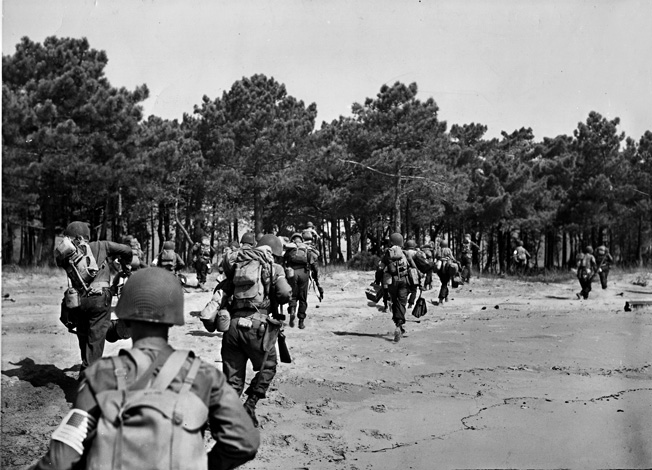
Operation Dragoon
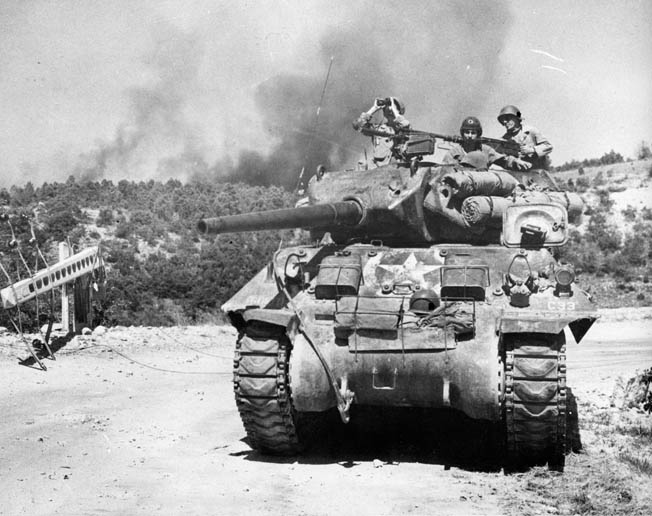
Southern France - 1944
Cut to pieces in the back and forth struggle to take and hold the town of Holtzwihr, on the frosty afternoon of 1/26/1945, Murphy is in command to Company B of the 15th Regiment of the 3rd Infantry Division ... the only officer left standing to lead a force of 120 men that has been whittled down to 18 soldiers that are told to hold the line facing the village (supported by two M10 tank destroyers from Lt. Colonel Walter E. Tandy's 601st Tank Destroyer Battalion). The Germans in Holtzwihr however have different plans in the form of an assault by six tanks and over 250 German infantrymen in white camouflage suits, elite members of the German 2nd Mountain Division ... a mismatch, if not for Second Lt. Murphy.
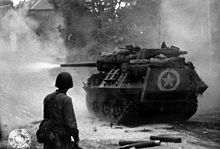
M10 Tank Destroyer In Action - 1944
A lopsided clash almost immediately, the shells of the two tank destroyers bounce off the heavily armored German tanks, while the 88mm shells on the German Tigers incapacitate the American armored vehicles, putting one in a ditch where it can't fire, and scoring a direct hit on the other that kills the tank destroyer's commander and gunner. Seeing his position quickly become untenable, Murphy orders his men to retreat into the tree line, then calls in a fire mission on the advancing Germans while taking out soldier after soldier with his carbine. Rifle ammo completely expended, he is about to follow his men into the woods, when he realizes the .50-caliber machine gun on the flaming tank destroyer is still functional. Climbing atop the flaming vehicle, alone, Murphy turns the machine gun on the oncoming Germans, hoping to kill enough supporting soldiers that the tanks turn tail ... and grabbing the field phone back to battalion headquarters, he calls in mortar, artillery, and P47 Thunderbolt fighter bombs on the attacking Germans (shells and bombs that detonate within 50 yards of his position) ... for over an hour. Explosions, noise, and fire and smoke mask Murphy's position for awhile, but eventually the flaming tank destroyer is hit by two more 88mm shells ... wounding Murphy in both legs and reopening his hip wound. Grounds for goodbye, despite his painful wounds, Murphy continues firing the machine gun to his left, right, and front (one squad of Germans will get within 10 yards of Murphy before he takes them out and when an artillery officer back at headquarters asks over the phone where the Germans are, Murphy sarcastically replies, "Just hold the phone a second and I'll let you talk to one of the bastards!") until once more he is out of ammo. Germans tanks finally withdrawing as their supports fall back on Holtzwihr, Murphy finally abandons the tank destroyer and limps back to his men's position in the forest ... just in time, as the tank destroyer explodes seconds after Murphy leaves the flaming vehicle (interviewed later about the action, Murphy will proclaim that being on the tank destroyer was the first time in three days his feet had been warm). Reunited with his men, Murphy refuses medical treatment for his wounded legs (a field map in his pack is riddled with shrapnel and rock fragments and his trousers are soaked in blood), and instead, leads his handful of men forward in a counterattack against the Germans that positions the Americans to take the town the following day.
Medal Of Honor - Painting
Medal Of Honor - Movie (To Hell And Back)
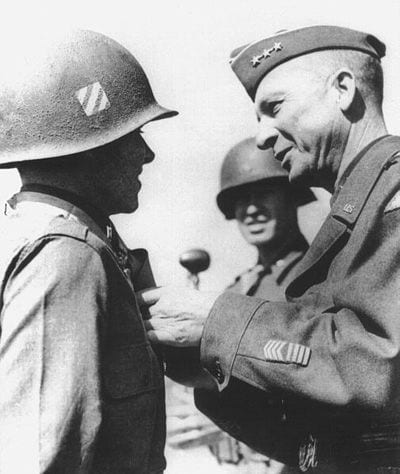
The Medal Of Honor - Awarded
Awarded the Congressional Medal of Honor on June 2, 1945 by Seventh Army commander, Lt. General Alexander Patch, Murphy will be featured on the cover of Life magazine as America's most decorated soldier, and that cover photo is seen by actor James Cagney, who, impressed by former soldier's youthful looks, takes the Texan under his wing to become a Hollywood actor ... and the amazing Murphy story gets several more unbelievable chapters that include dropping out of West Point when he decides not to pursue an officer's life in the army, dealing with the post-traumatic stress of his combat experiences (he has headaches, vomiting, and nightmares about the war, becomes addicted, but then cold turkey kicks a dependence on the insomnia drug, Placidyl, has bouts of depression, and sleeps with the lights on and a loaded pistol under his pillow), serves in the Texas Army National Guard until 1956, writes poetry and 1949 war memoir called To Hell And Back which becomes a best seller (and is made into a 1955 Universal-International Technicolor and Cinemascope film starring Murphy playing himself), becomes a Universal star (in his first role for the studio he will be cast in the part of Billy the Kid), becomes a millionaire, marries twice and has two sons, breeds quarter horses, has a TV show called Whispering Smith (based on the 1948 western starring Alan Ladd), and dies in tragic 1971 plane crash twenty miles west of Roanoke, Virginia at the age of only 45!
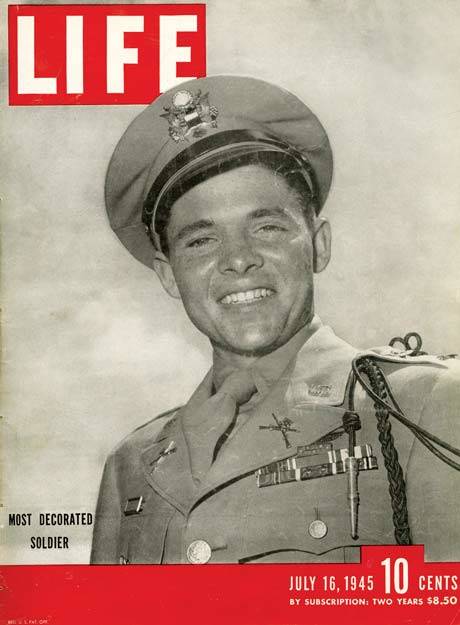
Life Magazine

As Outlaw Bill Doolin In The Cimarron Kid
Plane Crash
An amazing American life lived to its fullest, First Lieutenant (he gets a final promotion after Holtzwihr) Audie L. Murphy is buried with full military honors in Arlington National Cemetery on June 7, 1971 ... Section 46, headstone number 46-366-11, located across Memorial Drive from the Amphitheater is where the former soldier now rests (a special flagstone walkway will be built later to accommodate all the foot traffic to Murphy's grave) ... in the cemetery's second most visited site, after President John F. Kennedy's grave and "eternal" flame. Always considering himself an ordinary soldier, at Murphy's insistence, he is buried beneath a plain headstone lacking the gold leaf decorations Medal of Honor winners are entitled to have.
Arlington

Audie Leon Murphy
شركات نقل الاثاث بجازان افضل شركة نقل عفش بجازان نقوم بنقل الاثاث من والى جازان فى اى وقت سيارت مغلقة خدمة عملاء على اعلى مستوى من المهنية عمالة فلبينية ماهرة فى نقل الاثاث من والى جازان
ReplyDelete